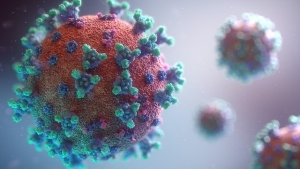
Drug development and regulation will never be the same following the momentous changes in healthcare delivery and biomedical research over the past year. The desperate need for new vaccines and therapies to tame the deadly COVID-19 virus required new policies and procedures for how biopharma companies select, test, and manufacture medical products—and revised regulatory practices for evaluating clinical data, manufacturing operations, and procedures for submitting and analyzing information.
Most visible have been the many changes in the conduct of preclinical and clinical studies for new vaccines, drugs, and medical products. The shutdown of many clinical sites and difficulties in visiting medical facilities required researchers to use virtual and remote methods for identifying potential trial participants, obtaining informed consent, and tracking clinical data. Sponsors looked to deliver experimental treatments directly to patients and to record symptoms and treatment effects at home. Interest rose in innovative clinical research methods, such as master protocols, adaptive trial designs, and Bayesian analytical methods to reduce study size and duration. Digital technology was adopted to track novel endpoints, and the value of utilizing real-world data and real-world evidence from healthcare systems and disease registries gained acceptance for supporting pre- and post-approval
research requirements.
Sponsors gained important advice from FDA on conducting clinical trials during the pandemic from a steady stream of new guidance documents addressing the need for flexibility while maintaining study integrity. Multiple advisories discussed new analytic approaches, protocol management, and dealing with missing data, among other critical issues. At the same time, important guidance documents advised manufacturers on strategies for testing and producing new vaccines and therapies to treat COVID patients.
An important innovation was FDA’s expanded use of the Emergency Use Authorization (EUA) process to speed successful products to patients during the health emergency. At the same time, the regulators required vaccine trials to test thousands of patients to assure the public of the safety and viability of these new preventives. Vaccine experts at the Center for Biologics Evaluation and Research (CBER) worked overtime to clarify the size and diversity of efficacy trials and key analytical assessments needed to gain EUA status and later full approval, establishing standards and procedures that will shape research for health emergencies to come.
Modernizing manufacturing
The need to quickly produce millions of doses of new vaccines and therapies spurred industry adoption of innovative testing and production methods. Biopharma companies invested resources to update facilities and establish new modular, flexible line operations. Competitors formed partnerships and licensing arrangements to meet production goals at home and for other regions. FDA continued to promote industry adoption of modern manufacturing methods and advanced quality assurance programs to expand biopharma operations in the United States and overseas.
Broader investment in efficient manufacturing systems for generics as well as brand-name medicines was critical to head off drug shortages and ensure reliable production of widely used medicines needed to treat patients in emergency rooms as well as those relying on established therapies for serious diseases. FDA used its expanded authority to respond quickly to shortage situations to prevent gaps in the medical product supply chain for multiple vital medicines.
At the same time, curbs on FDA inspections to evaluate manufacturing sites during the pandemic prompted regulators to expand their use of alternative oversight methods. FDA officials relied more on past inspection reports, current documents from manufacturing sites, and inspection reports prepared by trusted foreign regulatory authorities and shared under mutual recognition agreements. In some cases, FDA “visited” a site through remote online systems. Officials at FDA’s Office of Regulatory Affairs (ORA) indicate that the agency will continue to utilize many of these strategies for streamlining oversight of manufacturing operations, even as on-site visits increase overseas and at home, leading to a more “hybrid” inspection process going forward.
Regulatory flexibility
In addition to remote field inspections, FDA review staff organized virtual meetings with medical product sponsors to assess and devise appropriate, yet more flexible R&D programs. Even with most agency staffers working off site, reviewers for drugs, biologics, and generics formed multi-disciplinary teams to assess research proposals remotely to clarify what data and analysis were needed for a product to gain market approval. Such team efforts have been particularly effective for analyzing new COVID-19 vaccines and therapies, as well as for timely review of the steady stream of new drug applications (NDAs), biologics license applications (BLAs), and supplements to treat multiple conditions.
One result is that drug approval processes for fiscal year 2021 remained
strong, with 53 novel drugs approved by the Center for Drug Evaluation and Research (CDER) as of Sept. 30, 2021. That includes multiple treatments for cancer and rare diseases, many utilizing expedited and accelerated approval pathways. CDER also maintained steady review rates for generic drugs as seen in the approval of more than 800 abbreviated new drug applications (ANDAs), including more than 90 first generics and complex generic therapies. There were important advances in biosimilars, moreover, with the approval of the first two interchangeable products (1).
Despite these accomplishments, FDA officials had to contend with public criticism that the review process was taking too long to save dying patients, or that the agency was speeding experimental products through the review process, threatening public health and safety. The highly pressured atmosphere exhausted many FDA employees, as seen in recent announced departures of several agency officials and experienced staffers, and such departures are likely to pick up in the coming months. Changes in agency leadership, in regulatory strategies, and in decisions by researchers and manufacturers on where and how to plan future investments are slated to alter drug development and oversight for years to come.
About the author
Jill Wechsler is Washington Editor for BioPharm International.
Reference
1. FDA, Generic Drugs Program Activities Report–Monthly Performance, FDA.gov, accessed Nov. 15, 2021.